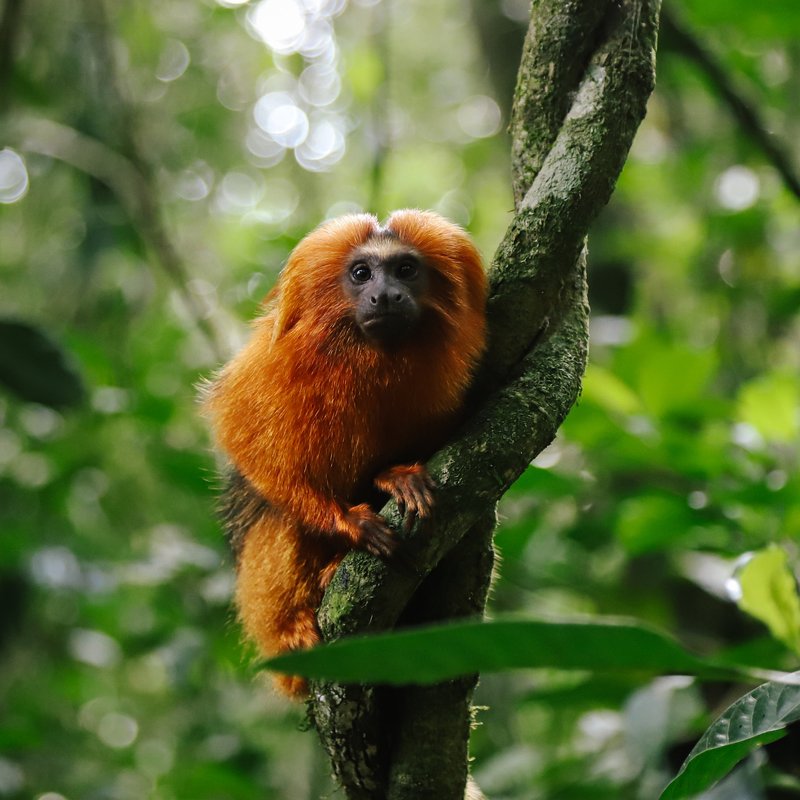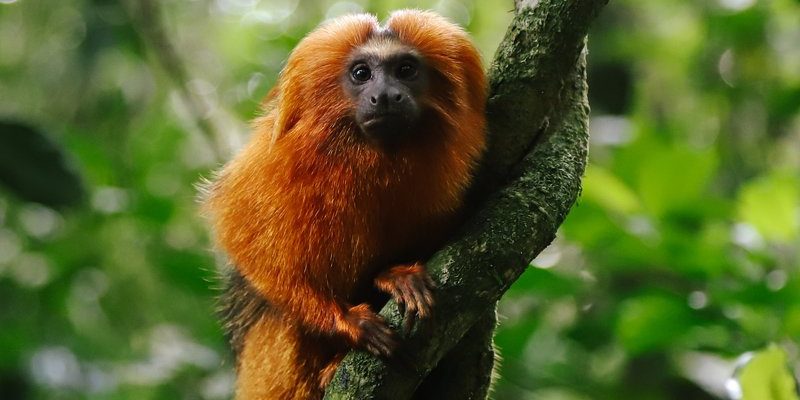
If you’re curious about these adorable primates and how they adapt to seemingly tough habitats, you’re in the right place. In this article, we’re going to delve into the incredible world of tamarins. We’ll explore their unique adaptations, social structures, and how their diet plays a crucial role in their survival. So grab a cup of coffee, and let’s jump into the remarkable lives of tamarins!
Unique Physical Adaptations
Tamarins are equipped with several unique physical traits that help them survive. First off, their small size—ranging from about 8 to 14 inches—allows them to navigate the dense undergrowth and branches easily. This agility is a big advantage when it comes to escaping predators or searching for food. Imagine being able to dart behind a branch or slide through tiny openings without a second thought—it’s almost like having a built-in stealth mode!
Another interesting adaptation is their sharp claws. Unlike other monkeys that have flat nails, tamarins possess claws on most of their fingers and toes. These claws function almost like little hooks, enabling them to grip tree bark securely as they climb. This gripping ability is essential for a life spent in the trees. Think of it like having specialized climbing shoes that allow them to explore every inch of their arboreal habitat.
Their colorful fur also plays a role in their survival. The bold markings on their coats help them blend into the vibrant foliage of the rainforest. This camouflage is essential for hiding from predators. Just picture a tamarin swinging through the trees, perfectly aligned with the bright green leaves and shadows—it’s like nature’s own hide-and-seek!
Social Structures and Teamwork
Tamarins are social creatures, often living in small family groups called troops. These troops typically consist of around 2 to 15 individuals and function like a tightly-knit family. Living in a group has huge advantages, especially in harsh environments. They work together to find food, keep watch for predators, and take care of their young. You might say they have a built-in support system!
One of the critical roles within the troop is that of the sentinel. While some tamarins search for food, others stay alert as lookouts for potential dangers. When one of them spots a threat—like a hawk or a snake—they let out alarm calls, warning the others to stay safe. It’s a classic example of teamwork, reminding us of how crucial it is to look out for one another, especially when the stakes are high.
Additionally, social grooming is a common behavior among tamarins. This isn’t just about keeping their fur tidy; it strengthens social bonds and decreases stress levels. You might think of it like a spa day with friends! By grooming each other, tamarins reinforce their relationships, making it easier for them to work together when times get tough.
Foraging and Diet Adaptations
When it comes to food, tamarins are quite the resourceful eaters. Their diet mainly consists of fruits, insects, and small vertebrates. However, foraging in a harsh environment can be tricky, so they’ve adapted to make the most of what’s available. For instance, during the rainy season, they feast on ripe fruits, while during drier spells, they switch to insects and even tree sap. Talk about a flexible menu!
Tamarins are also known for their remarkable sense of smell. This keen sense helps them locate food sources hidden among the leaves and branches. Think of how satisfying it is to find your favorite snack just by sniffing around—that’s how tamarins approach their meals. They can even detect which fruits are ripe and ready, ensuring they get the freshest options available.
Another fascinating aspect of their foraging is their ability to share food within the troop. Tamins often engage in food-sharing behaviors, particularly with their young ones or less experienced members of the group. This shared feeding strategy not only ensures that everyone gets enough to eat but also teaches the younger tamarins important skills, like when and where to find food. So, it’s like passing down secret family recipes for survival!
Dealing with Predators
Life in the wild isn’t just about finding food; it’s also about avoiding becoming someone else’s meal. Tamarins face threats from various predators, including hawks, snakes, and larger carnivores. To cope, they’ve developed clever strategies to evade capture. One of the most effective methods is their incredible agility. When they sense danger, they can quickly change directions, darting through trees and underbrush to escape. It’s like a dance where every move counts!
Hiding in the dense foliage is another strategy. To avoid being seen, tamarins often choose to stay low in the canopy when they’re on the lookout for predators. Their brown and black fur helps them blend in with the bark and leaves, making it harder for predators to spot them. Just imagine trying to find a friend who’s wearing camouflage in a forest—that’s how well they’ve adapted to their environment!
Lastly, their social structure aids in predator detection. With multiple pairs of eyes scanning the surroundings, the chances of spotting danger increase significantly. When one tamarin raises the alarm, the entire troop can take action swiftly, ensuring their safety. It’s a clear example of how teamwork can be a game changer in the wild.
Adapting to Weather Extremes
Tamarins also face the challenges of unpredictable weather. In many regions, the climate can swing drastically, from torrential rains to extreme heat. Tamarins have learned to adapt their behavior to cope with these changes. During heavy rains, they’ll seek shelter in tree hollows or dense foliage, waiting for the storm to pass. You might picture them as little furry umbrellas, waiting out the storm until the sun comes back!
When it gets hot, they adjust their activity levels. Instead of foraging during the hottest part of the day, tamarins often rest in the cooler shade of the forest. This behavior not only conserves energy but also reduces dehydration risks. By being smart about when they move, they ensure their survival in a challenging climate.
Their fur also plays a role in weathering the elements. The dense coat helps keep them warm during cooler temperatures and provides some protection from rain. You might say it’s like having built-in weather gear that helps them thrive no matter what Mother Nature throws their way.
Conservation and Their Future
Despite their incredible adaptations, tamarins, like many wildlife species, face challenges that threaten their survival. Habitat destruction due to deforestation and human activities has put serious pressure on their populations. As their home shrinks, they lose not only food sources but also safe places to live. This situation raises important questions about our responsibility to protect these remarkable creatures and their habitats.
Conservation efforts are underway to help tamarins thrive in the wild. Many organizations are working tirelessly to create protected areas and educate local communities about the importance of preserving these habitats. It’s like giving a lifeline to tamarins and ensuring they continue to swing through their trees for generations to come.
You might be wondering how you can help. Supporting local conservation organizations, advocating for sustainable practices, or even educating others about tamarins can make a difference. Every small action counts in the fight to protect these incredible creatures and their environments.
In conclusion, tamarins are more than just cute faces; they are remarkable survivors in harsh environments. Their unique adaptations, social structures, and dietary strategies make them resilient. However, it’s crucial for us to pay attention to their plight and do our part in ensuring their future. After all, every time we help protect a habitat, we not only save tamarins—we contribute to the balance of our planet’s ecosystems.

